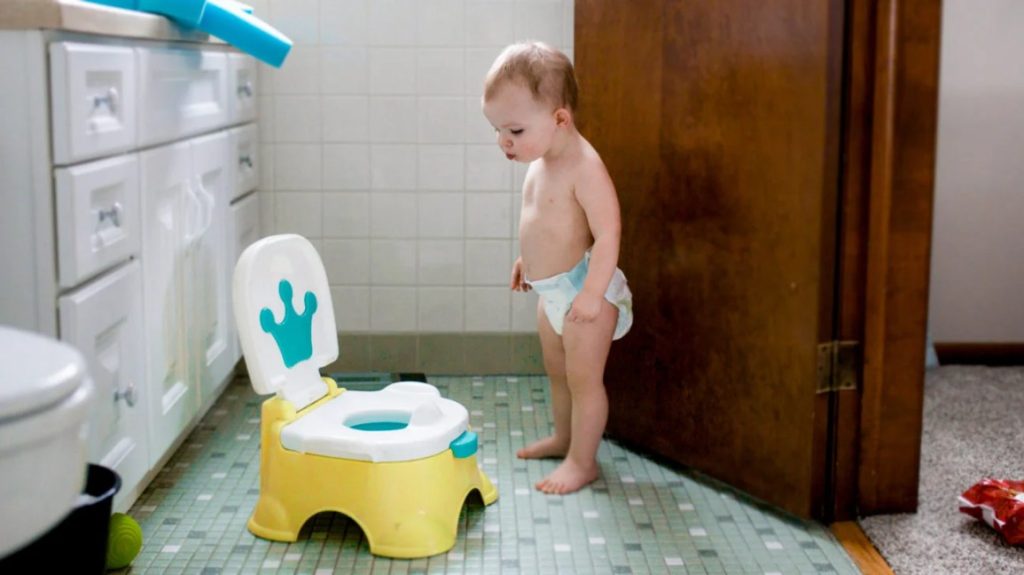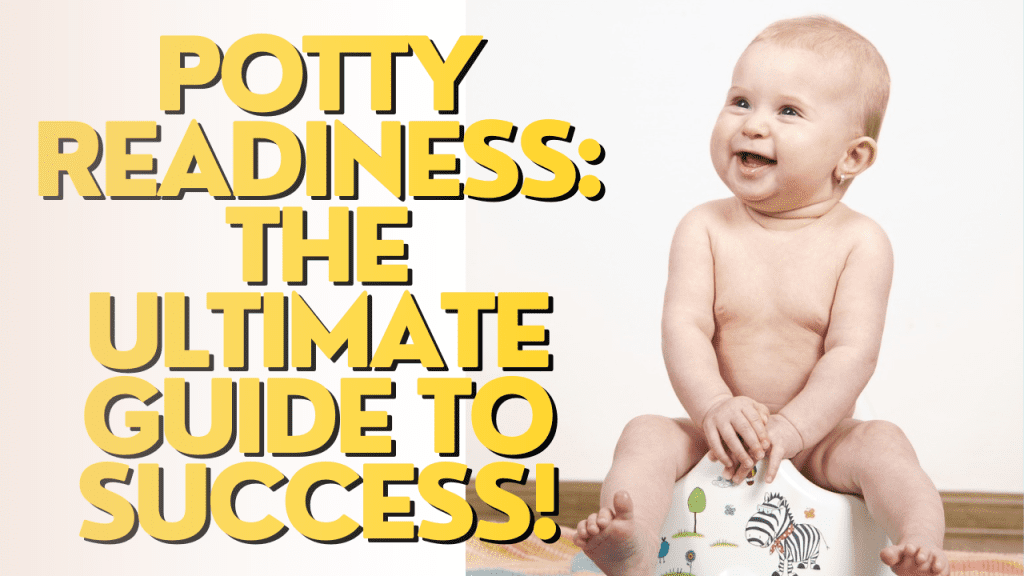Transitioning from diapers typically occurs between the ages of 2 and 3 years old, with many parents opting to switch to pull-ups for potty training during this time. To encourage your child to stop using diapers, you can reduce their liquid intake before bedtime and encourage them to notify you if they need to use the toilet during the night.
It’s important to wait until the diaper is consistently dry in the morning for several days before attempting nighttime diapering.
By following these steps, you can help your child successfully transition from diapers to using the toilet.


Credit: www.stressfreemommies.com
Transitioning from Diapers: A Step-by-Step Guide
Step 1: Signs Of Readiness
Transitioning from diapers can be a major milestone for both parents and children. Step 1 in this process is recognizing the signs of readiness.
Understanding physical and behavioral cues can help you determine if your child is ready for potty training.
Look for signs such as staying dry for longer periods, showing interest in the bathroom, or being able to communicate when they need to go. Timing is also crucial when it comes to potty training. Make sure to choose a time when you can dedicate consistent effort and attention to the process.
By recognizing these signs and choosing the right time, you can set your child up for success in transitioning from diapers to using the toilet.
Step 2: Creating A Potty Training Routine
Transitioning from diapers to potty training requires establishing a consistent routine. Setting aside dedicated practice time is crucial.
Incorporating regular bathroom visits helps familiarize your child with using the toilet. By following a routine, you provide structure and consistency, which promote successful potty training.
Remember to praise your child for their attempts, reinforcing positive behavior. It’s important to be patient, as every child learns at their own pace. Avoid rushing the process and offer encouragement throughout the journey.
Transitioning from diapers is a significant milestone, and with a consistent routine, you can help your child successfully make the switch to using the toilet.
Step 3: Praise And Encouragement
Transitioning from diapers to using the toilet involves an important step: praise and encouragement. By celebrating successful attempts and providing continuous support, you can motivate your child throughout the process.
Using positive reinforcement, such as verbal praise or a small reward, can make your child feel proud and accomplished.
It’s essential to acknowledge their efforts and express confidence in their abilities. Remember to offer encouragement even if they have setbacks or accidents. Being patient and understanding is key during this transition.
With consistent praise and encouragement, your child will be motivated to continue their potty training journey and eventually become independent in using the toilet.
Step 4: Duration Of The Potty Training Process
Transitioning from diapers is a gradual process that requires understanding, patience, and managing expectations. Every child progresses at their own pace, so it’s important to recognize and respect their individual journey. The duration of the potty training process can vary from child to child.
Some may take a few weeks, while others may take several months. It’s crucial to be patient throughout this process and not rush or pressure the child.
Remember that accidents are normal and part of the learning process. Celebrate and praise the child’s attempts and progress, even if they are small.
By creating a supportive and positive environment, you can help your child feel confident and motivated to continue their potty training journey.
Step 5: Troubleshooting Common Challenges
Transitioning from diapers can come with its fair share of challenges. In step 5, we’ll address some common issues that parents may encounter during the process. Accidents and setbacks are a natural part of the learning process, so it’s important to be prepared for them.
Dealing with accidents calmly and offering reassurance can help your child feel more confident. Additionally, addressing any resistance or fear your child may have is crucial. Take the time to understand their concerns and provide support and encouragement.
If you find that the challenges persist or become overwhelming, seeking professional advice from a pediatrician or child specialist can be beneficial.
Remember, each child is unique, and patience and persistence are key when it comes to successful potty training.
Step 6: Transitioning To Underwear
Transitioning to underwear is a significant milestone in a child’s journey from diapers to independent potty use. Knowing when it’s time to switch from pull-ups to underwear is essential.
Once your child is comfortable using pull-ups consistently during the day and at night, it’s a good indication that they are ready for the transition.
Adjusting to regular underwear may take some time, as accidents can still happen. However, reinforcing positive bathroom habits through praise and encouragement can help with the process.
Remember to be patient and supportive throughout this transition period as your child learns to master the use of underwear for their potty needs.
Step 7: Celebration And Graduation
Celebrating your child’s successful transition from diapers is an important milestone. It’s essential to recognize their achievements and growth throughout the potty training journey.
This graduation signifies that they are moving forward and becoming more independent. It’s a time to acknowledge their hard work and perseverance, as well as your own efforts in guiding them through this process.
Celebrating this milestone can be done in various ways, such as throwing a small party, giving them a special treat or gift, or simply expressing your pride and excitement for their accomplishment.
By celebrating their transition from diapers, you are not only reinforcing their success but also building their confidence as they continue to grow and develop.
Conclusion
Making the transition from diapers is a significant milestone in your child’s development. It signals their growing independence and ability to take care of their personal needs.
By following the signs of readiness and using effective potty training techniques, you can help your child make a smooth transition from diapers to using the toilet.
Remember to be patient and offer praise for their efforts along the way. Timing is also crucial when it comes to making this transition. Most parents switch to pull-ups or training pants for potty training at around 2 to 3 years old.
However, every child is different, so it’s important to observe their readiness cues and not rush the process. Encouraging your child to take charge of their bathroom habits can be challenging, but with consistent guidance and support, they will eventually become confident in their ability to use the toilet independently.
Celebrate each success and be understanding of setbacks. Before you know it, your little one will be proudly saying goodbye to diapers and embracing their newfound toilet training skills.



